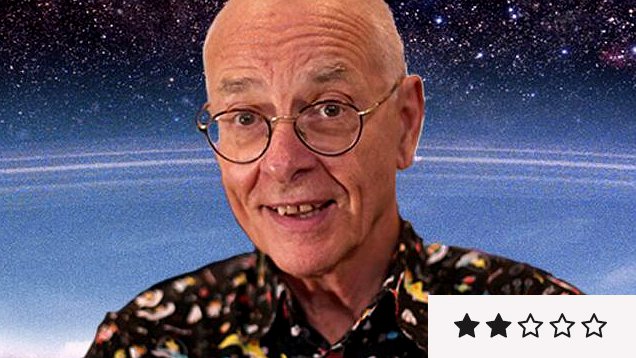Living Universe review: the great Dr Karl Kruszelinicki narrates ho-hum science project

In the educational documentary Living Universe, the narrator – beloved Australian scientist and radio personality Dr Karl Kruszelinicki – explains that the Kepler Telescope has beamed back images of Earth-sized ‘exoplanets’ in the so-called ‘Goldie Locks Zone’ region of the Milky Way. The Kepler mission confirms that almost every star has at least one planet, and that one in four stars have planets in habitable zones.
The prospect of alien life (as we know it) is therefore more likely than ever before. And yet in terms of distance it is near impossible to reach. In Living Universe scientists explain what we’d have to achieve in intergalactic travel to have a shot at answering whether or not we’re alone in the universe.
Writer/director Alex Barry and co-director Vincent Amouroux create a fictional mission set 150 years in Earth’s future. An artificial intelligence pilot (named Artemis and voiced by Astrophysicist Tamara Davis) steers a starship to a fabricated planet named Minerva B.
Using CGI and a roster of all-star scientists (such as NASA’s Natalie Batalha and Gentry Lee, Harvard University’s Avi Loeb and M.I.T’s Sara Seager) they create a best-guess vision of a ‘scientifically accurate’ mission. Living Universe creates visualisations designed to pace out dumps of information for our puny brains to process.
Part of what makes large sections of the film work is the way it captures the participants’ passion for human ingenuity
Part of what makes large sections of the film work is the way it captures the participants’ passion for human ingenuity: the very essence of why we climb the highest mountains, explore the deepest ocean valleys, and the farthest reaches of our solar system. Bridging the fictional and factual, it asks us to come to terms with using technology to do what our bodies and our lifespans won’t allow.
As a result the film answers a rather different question: how dull would it be to see the Discovery One spaceship from 2001: A Space Odyssey piloted by HAL, with no humans aboard? The answer is very slow and very dull indeed.
For this reviewer that was the catastrophic flaw. The further in the future the projections, the less Living Universe engaged with the philosophical implications of these pursuits. Some eye-opening and terrifying insights are explained in an almost throw-away fashion. Prototype antimatter propulsion engines, for example, may need to be assembled in space, out of fear that a malfunction could destroy the planet. Also, robots are being created with organic structures using 3D printing. Who gave these folks permission to do this?
Living Universe is the Walking with Dinosaurs of space documentaries. While it commendably uses our evolving understanding of the universe to tackle problems our next generation of explorers will face, it fails to do so in ways that are dramatically or cinematically interesting. Alfred Hitchcock famously described drama as “life with the dull bits cut out.” In this film, the dull bits stayed in.

















